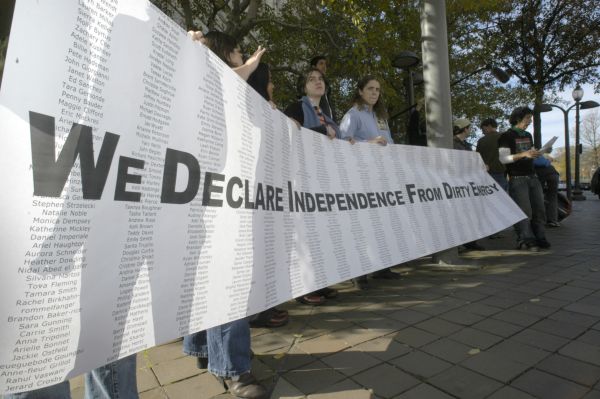Last week the Department of Energy (DOE) and the Environmental Protection Agency (EPA) signed a Memorandum of Understanding (MOU) on the Energy Star program. Who runs Energy Star, the extremely successful program for promoting efficient appliances, equipment, and buildings, and how they run it has been a point of tension between the agencies that are jointly tasked with administering the program. Consumers now look for the Energy Star label when making a purchase and manufacturers strive to make sure their products qualify – a credit to both agencies. Success has caused growing pains and disagreements between the agencies.
Joint administration of the program will continue, however the new MOU may signal an end to some issues that have bubbled up repeatedly. Recent examples include,
- The media attention given to the poor performance of some Energy Star labeled refrigerators. You have to go way back to my not-so-nice blog from last year, but basically a test procedure problem at the DOE allowed refrigerators to use twice as much energy as they should and be sold as Energy Star.
- “Off the shelf” units testing much worse than advertised as a result of a lack of enforcement.
- The lack of updates to the efficiency levels required to attain the levels in many product classes, such as windows, where at one point 90% of all replacement widows sold met the weak requirements.
- Disagreement over which agency should handle the Solid State Lighting specification.
Now that both agencies have staffed up after the administration change, they clearly would like to put the past behind them and move forward. The MOU is designed to clarify roles and responsibilities as much as possible and put forward a framework for expanding and enhancing the program. There may be some skepticism that after decades of uneasy relations that these issues will finally be resolved, but after taking a look at the MOU and talking to staff, it seems to me that they should be given the opportunity make this agreement work.
In a nutshell, the MOU clarifies which agency is the lead in which area. In the past DOE and EPA split up the specifications for various appliances. DOE covered the more traditional products, such as refrigerators, water heaters, and windows, while EPA covered all consumer electronics. EPA also managed Energy Star for buildings while DOE conducted its own building efficiency work that was only loosely related.
EPA will now be taking the lead on all appliances and equipment specs while DOE will take more of a leadership role in buildings. DOE will also expand the National Building Rating Program (which would determine how efficient a building is and distill it into a rating) and manage all test procedures and metrics, all of which feed into Energy Star.
The MOU also clarifies how Energy Star specifications will be set, and does so in a way that NRDC has advocated for in the past. The baseline to participate in the program will be set where approximately the most efficient 25% of the market (flexibly defined, depending on the product) will qualify. Once the market share of Energy Star products reaches 35%, the specification will be revisited. Specifications for products with long useful lives will be revisited automatically every 4 years, while products where technology is evolving rapidly (TVs and other consumer electronics) will be revisited every 2 years. We agree with this proposal and think this will help keep the label fresh and usable for consumers.
There will also be testing of products “off the shelf” for enforcement, meaning someone will go out and buy one at the store and see if it works as advertised. Products will also be tested in accredited laboratories to determine if the product qualifies in the first place, rather than just letting manufacturers self certify. With these changes, consumers should feel very confident that they will save money and energy if they purchase an Energy Star appliance.
Lastly, the agencies are proposing an “Energy Super Star” for the most efficient 5% of products. This is very new, and everyone has some questions about how it would work but the idea certainly has merit. Legislation currently under consideration in Congress would create something similar by designating “Best-in-class” appliances at about the same efficiency level. Regardless of how it is done, it seems that the very best appliances will be identified in some way.
The agencies have put forward a framework for improving and enhancing Energy Star and this is a very positive development. It may take some reworking of legislative language in Congress to make it a reality, but the new EPA and new DOE should be given a chance to make it work. Government agencies working issues out on their own is preferable to Congressional intervention every time, as changing laws is difficult and time consuming. If the agencies follow through, the Energy Star program will become even more successful and help make efficient appliances and buildings the rule, rather than the exception.



